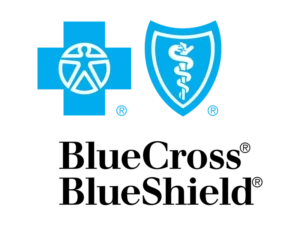How to Identify Your Emotional Triggers: A Guide to Teen Emotional Awareness

Emotions don’t always follow a logical course for teens – and this is normal. The brain is still developing into the mid twenties, which can make emotional awareness and control a challenge at times.¹ For instance, one moment you might feel fine, but the next you’re overwhelmed and find it hard to pinpoint why.
Learning to recognize what triggers emotions is one of the most powerful tools for coping with them. Emotional triggers are like invisible switches. Certain words, situations, or tones of voice can cause someone to react impulsively, like they’ve lost control. Teen emotional awareness provides the ability to pause, notice, and ask: What’s really happening inside me?
When you start tracking emotional reactions and recognizing mental stress patterns, you build emotional intelligence. In other words, you not only begin to understand your emotions, but also why you feel certain ways. This awareness is the first step toward managing emotional responses in a way that’s healthy, not harmful.
This guide can help you identify your emotional triggers by exploring:
- Why recognizing mental stress patterns in teens can help
- The benefits of emotional awareness
- How to identify your emotional triggers
- How to respond to emotional triggers
- Techniques for teaching youth emotional regulation
- How Mission Prep can help teens cope with intense feelings

Why Recognizing Mental Stress Patterns in Teens Helps
Stress doesn’t show up in the same way for every teen. Some feel it in their stomach or chest, others become irritable or shut down completely. Learning to recognize these mental stress patterns is one of the most important steps in building emotional awareness. It helps teens notice when something is off before it turns into overwhelm.
When teens begin tracking emotional reactions, like how their body feels before a test or how their mood shifts after scrolling social media, they can start to detect patterns. Rather than feeling like emotions just “happen,” teens start to understand what triggers them and why. For example, they might see that a test causes feelings of stress, or that social media leads to feelings of shame.
Detecting these patterns strengthens teen emotional awareness, reduces confusion around intense emotions, and allows them to take control of their responses. In other words, they can learn how to respond to triggers in adaptive ways rather than impulsively reacting to them. Over time, this emotional fluency helps build the kind of self-trust that supports healthy relationships, academic success, and long-term wellbeing.
Plus, these aren’t the only benefits of teen emotional awareness – we discuss the mental health advantages in more detail next.
The Benefits of Teen Emotional Awareness
Research shows that disrupted emotion regulation can lead to anxiety and depression in teens.⁵ However, pinpointing where emotions come from and what triggers them can lead to improved regulation and well-being.
Plus, identifying emotional triggers doesn’t just lead to better awareness of negative emotions and why they happen. Research shows that emotional awareness can also lead to an increase in positive emotions in teens, fueling success in various areas of life.²
While adolescence is a powerful time for building emotional awareness, the brain is still developing in certain areas, which can make detecting patterns a challenge. For instance, the prefrontal cortex, the area that helps teens pause, reflect, and make thoughtful decisions, isn’t completely developed until the mid to late twenties.¹ Additionally, the amygdala, the part of the brain that processes emotion and threat, tends to react faster and stronger during the teen years.³ As a result, teens might feel things intensely before they fully understand them.
Yet, the more teens practice self-awareness tools and tune into what emotions are telling them, the more they strengthen neural pathways. For example, research shows that recognizing mental stress patterns early, such as developing emotion differentiation skills, leads to better relationships, stronger coping abilities, and fewer mental health struggles later in life.⁴
So, to sum up, teen emotional awareness isn’t just about knowing what you’re feeling and choosing your reaction in the moment. It’s about building the kind of internal security that makes for a healthy and stable life.
Identifying Emotional Triggers
Emotional triggers are personal, often subtle cues like words, situations, memories, or even tones of voice that spark intense emotional reactions. However, these triggers aren’t always obvious. In fact, many teens only notice the aftermath of an emotional trigger as a:
- Wave of anger
- Shut-down feeling
- Urge to escape
By tracking emotional reactions as they happen, teens can begin to identify what sparks their emotions and why. The process is about understanding the connection between current stressors and past emotional experiences. For example, feeling ignored might not be about what’s happening in the moment. It might tie into earlier experiences of feeling invisible or dismissed. The more aware teens become of these patterns, the more control they can gain over their responses.
Self-discovery for teens often begins with naming emotions. For instance, being able to pinpoint frustration, fear, or resentment can allow them to track where such feelings come from. This is where tools like an emotional triggers worksheet or a mood journal can help.
Learning How to Respond to Triggers
Once teens begin identifying emotional triggers, the next step is learning how to respond instead of react. Rather than allowing emotions to control their actions, they’re given the chance to make an intentional decision based on their desired outcome for the situation.
For instance, youth emotional regulation might involve:
- Noticing that emotions have been triggered
- Accepting that they’re experiencing a negative feeling
- Pausing before responding, for example, by using a breathing exercise or a grounding technique
- Choosing to respond in a desired way, like walking away from an escalating situation or reaching out to a trusted adult
However, if a teen feels like their emotions are too difficult to identify and track, therapy may be the best fit for their needs. Therapy topics for emotional triggers often center around recognizing when the nervous system is activated and practicing strategies that restore a sense of safety.
Tools for Tracking Emotional Reactions
Emotional regulation is a skill that teens can learn and strengthen with the right tools, support, and structure. While some emotional skills develop naturally over time, many teens benefit from guidance as they learn how to respond to triggers in healthier ways. These practices provide a foundation for emotional balance, mental health growth, and long-term resilience.
The following tools for tracking emotional reactions can help teens identify triggers and manage their emotions in healthy ways.
1. Mindfulness for Emotional Control
Practicing mindfulness helps teens notice their emotions in the moment without reacting impulsively.⁶ The following are evidence-based mindfulness techniques that could help teens track emotional triggers:
- Breathwork and body scans: These can help teens recognize early signs of stress in their bodies
- Mindful movement: Activities such as yoga or walking meditations can give teens the chance to gently notice emotions without judgment or feeling the need to react
- RAIN check-ins: Regular mindful check-ins can teach teens to track emotional reactions before they escalate. The RAIN method can help: Recognize, Allow, Investigate, and Nurture
2. Therapy for Detecting Emotional Triggers
When emotions are particularly unpredictable or intense, therapy may be the best fit for building awareness. It works by offering guidance and a safe space for understanding where strong feelings come from and how they show up. Evidenced-based therapies such as the following are commonly used to guide teens through emotional awareness:
- Cognitive behavioral therapy (CBT): CBT teaches teens how to challenge reactive thought patterns by noticing automatic, negative thoughts and emotions⁷
- Dialectical behavior therapy (DBT): DBT offers tools for distress tolerance and emotion regulation⁸
- Group therapy: When facilitated by a trained therapist, group sessions encourages connection, normalizes emotional ups and downs, and teaches coping skills⁹
3. Self-Awareness Tools Teens Can Use at Home
Support doesn’t end after a therapy session. Many youth emotional regulation strategies are simple enough to practice at home, allowing teens opportunities to practice identifying emotional triggers in “real life” settings. By doing so, a teen can build confidence in their ability to manage tough emotional states. For instance, a teen can…
- Use an emotional triggers worksheet to track daily reactions and patterns
- Try journaling for self-discovery, helping teens recognize what triggers their emotions and why
- Practice visualizations or grounding exercises to stay calm in stressful moments

Mission Prep: Professional Support for Coping With Intense Feelings
Whether you’re struggling with mood swings, anxiety, overwhelm, or just trying to figure out why certain situations hit you so hard, Mission Prep is here to support you.
Our programs are designed to help teens develop practical tools for coping with intense feelings in a safe and supportive environment. We understand that emotional triggers often come from real experiences like family conflict, academic pressure, social stress, or past trauma. Our aim is to help teens understand these triggers without shame, while simultaneously learning how to cope with them in healthier ways.
Through individual therapy, group support, and evidence-based techniques like mindfulness and emotional regulation training, we guide teens toward lasting change. If you or someone you love is ready to develop deeper self-awareness, strengthen emotional regulation, and feel more in control, reach out to Mission Prep for help today.
References
- Arain, M., Haque, M., Johal, L., Mathur, P., Nel, W., Rais, A., Sandhu, R., & Sharma, S. (2013). Maturation of the adolescent brain. Neuropsychiatric Disease and Treatment, 9, 449–461. https://pmc.ncbi.nlm.nih.gov/articles/PMC3621648/
- Yang, S., Jing, L., He, Q., & Wang, H. (2024). Fostering emotional well-being in adolescents: The role of physical activity, emotional intelligence, and interpersonal forgiveness. Frontiers in Psychology, 15, 1408022. https://www.frontiersin.org/journals/psychology/articles/10.3389/fpsyg.2024.1408022/full
- Swartz, J. R., Williamson, D. E., & Hariri, A. R. (2015). Developmental change in amygdala reactivity during adolescence: Effects of family history of depression and stressful life events. The American Journal of Psychiatry, 172(3), 276–283. https://psychiatryonline.org/doi/10.1176/appi.ajp.2014.14020195
- Nook, E. C. (2021). Emotion differentiation and youth mental health: Current understanding and open questions. Frontiers in Psychology, 12, 700298. https://www.frontiersin.org/journals/psychology/articles/10.3389/fpsyg.2021.700298/full
- Young, K. S., Sandman, C. F., & Craske, M. G. (2019). Positive and negative emotion regulation in adolescence: Links to anxiety and depression. Brain Sciences, 9(4), 76. https://pmc.ncbi.nlm.nih.gov/articles/PMC6523365/
- Bockmann, J. O., & Yu, S. Y. (2023). Using mindfulness-based interventions to support self-regulation in young children: A review of the literature. Early Childhood Education Journal, 51(4), 693–703. https://pmc.ncbi.nlm.nih.gov/articles/PMC8936381/
- Halder, S., & Mahato, A. K. (2019). Cognitive behavior therapy for children and adolescents: Challenges and gaps in practice. Indian Journal of Psychological Medicine, 41(3), 279–283. https://pmc.ncbi.nlm.nih.gov/articles/PMC6532387/
- Geddes, K., Dziurawiec, S., & Lee, C. W. (2013). Dialectical behaviour therapy for the treatment of emotion dysregulation and trauma symptoms in self-injurious and suicidal adolescent females: A pilot programme within a community-based child and adolescent mental health service. Psychiatry Journal, 2013, 145219. https://pmc.ncbi.nlm.nih.gov/articles/PMC3820084/
- Malhotra, A., Mars, J. A., & Baker, J. (2025). Group therapy. In StatPearls. StatPearls Publishing. https://www.ncbi.nlm.nih.gov/books/NBK549812/













